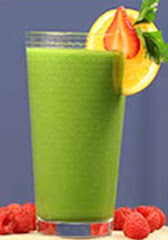 Stem cells hit the limelight in November 1998, when researchers first reported that they had isolated human embryonic stem cells. These cells, isolated from embryos that were several days old, can theoretically be differentiated into any kind of cell in the human body, from blood cells to brain cells to muscle cells. This was big news on the scientific front since scientists hoped to use these cells to repair damaged cells and tissue in adult humans. Unfortunately this research breakthrough also created a host of stem cell research issues that are still being debated today.
Stem cells hit the limelight in November 1998, when researchers first reported that they had isolated human embryonic stem cells. These cells, isolated from embryos that were several days old, can theoretically be differentiated into any kind of cell in the human body, from blood cells to brain cells to muscle cells. This was big news on the scientific front since scientists hoped to use these cells to repair damaged cells and tissue in adult humans. Unfortunately this research breakthrough also created a host of stem cell research issues that are still being debated today.So what's the big fuss about these research issues? Most of the controversy centers on the fact that the embryonic stem cells come from embryos and scientists must destroy the embryos to harvest the stem cells. Many pro-life and religious groups argue that an embryo represents a human life and that embryonic stem cell work is equivalent to murdering human lives. There are currently several sources of embryos, including aborted fetuses and fertility clinics (which have thousands of unwanted frozen embryos). All of these sources are currently undergoing serious scrutiny from the government and various lobbying groups.
Other stem cell research issues include the following questions:
- Should we pursue stem cell research just because we can?
- How far should we take stem cell research?
- Who should regulate this kind of research and how?
- Who should pay for this kind of research (which is very expensive)?
- What role should the government play in stem cell research?
It will likely take the government and the various scientific researchers involved in this controversy quite a while to resolve these research issues. Luckily for you, the consumer, there are alternative ways you can benefit from stem cells without getting involved in all the fuss. Along with embryonic stem cell research, scientists have also been studying ways to boost stem cell production in adults. Each of our bodies makes its own stem cells to repair and rejuvenate damaged areas, so while we may not be able to use embryonic stem cells to improve our health we can use our own to become healthier.
The stem cells in our bodies produce over 30 types of growth factors and tissue chemicals. They also help recruit other local and systemic stem cells to focus on repairing damaged tissue. They are also active in immune modulation to promote or suppress T-cell function. In short, stems cells are pretty nifty tools to have and the more stem cells you have the healthier you are. Best of all, when you focus on boosting your own stem cells instead of using someone else's, you don't run into all those stem cell research issues.
So how can you boost the number and health of the stem cells your body produces on its own? Research has shown that certain ingredients found in nature do just that. These include green tea extract, wild blueberry, carnosine, blueberry extract, vitamin D, and blue-green algae. These ingredients give your stem cells to proper nutrition so that not only do they multiply but they can better protect and repair your body. But don't worry, you don't have to go around squeezing wild blueberries into your green tea to get these beneficial effects. Nutritional products now available on the market package all of these ingredients into a simple daily supplement so that stem cell nutrition is as easy as pie. Plus, there are no stem cell research issues related to taking these products!
Alan Joel is a Doctor of Chinese Medicine and nutritional counselor. He is also an independent distributor of Simplexity Health, producer of all-natural blue-green algae products, including nutrition for stem cell support, for people, pets, and plants. For free health tips and to order blue-green algae online at wholesale prices at http://www.prosperity-abounds.com/order.html
Article Source: [http://EzineArticles.com/?Stem-Cell-Research-Issues---Whats-the-Big-Fuss?&id=1900708] Stem Cell Research Issues - What's the Big Fuss?







